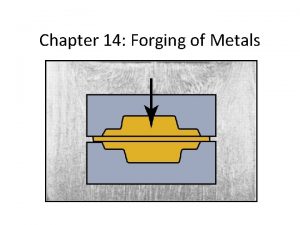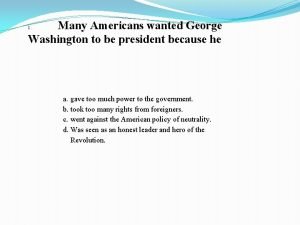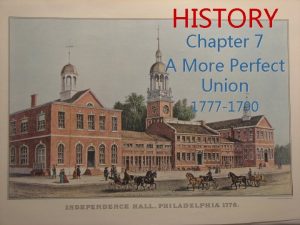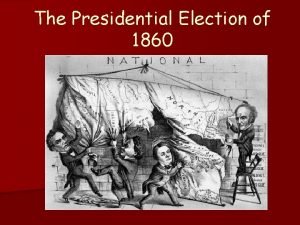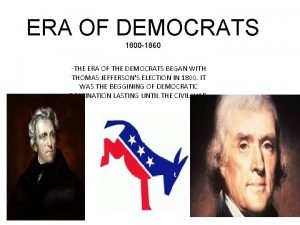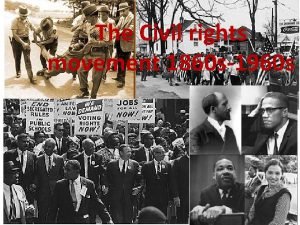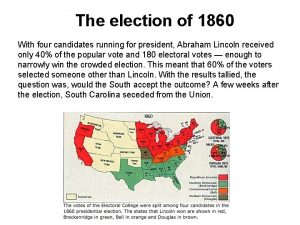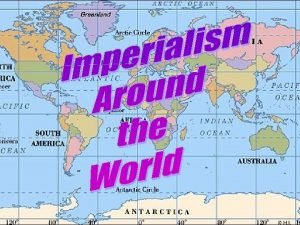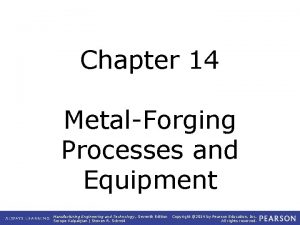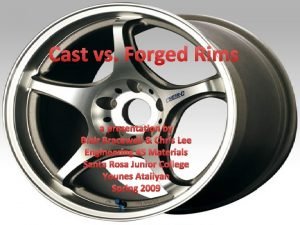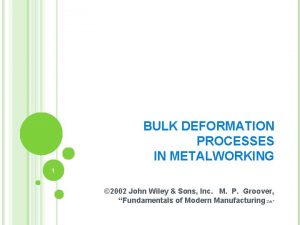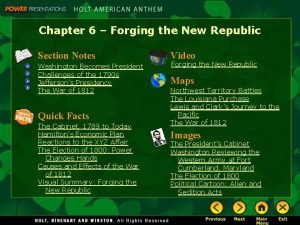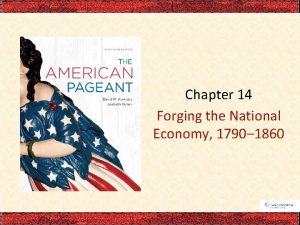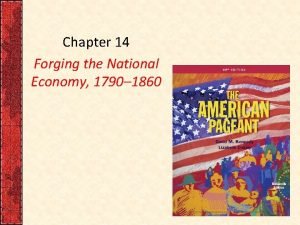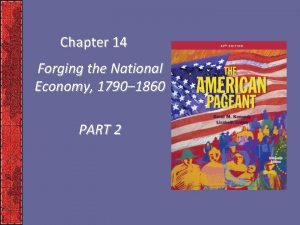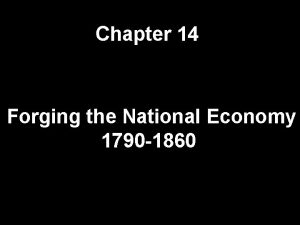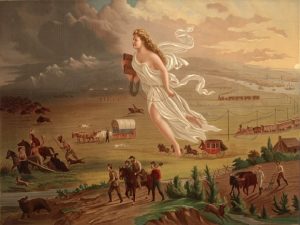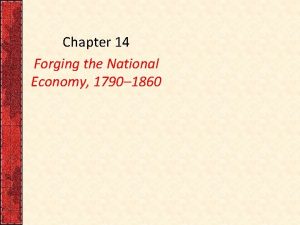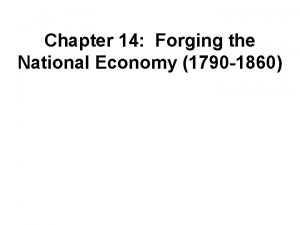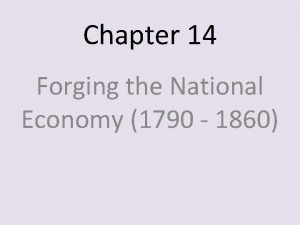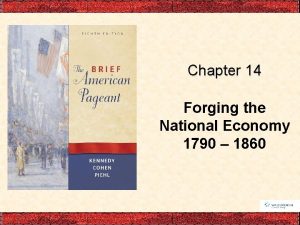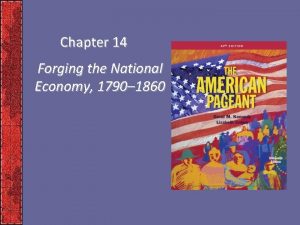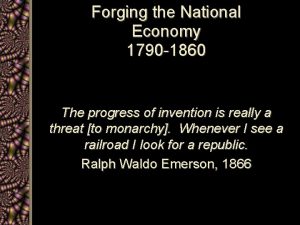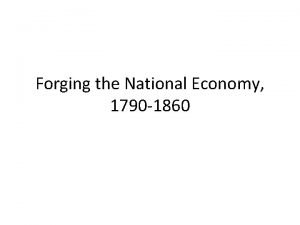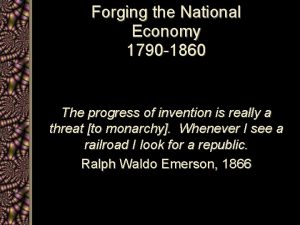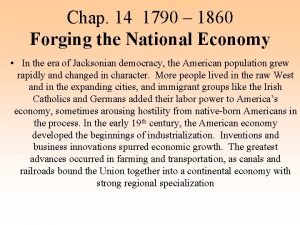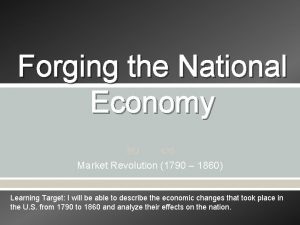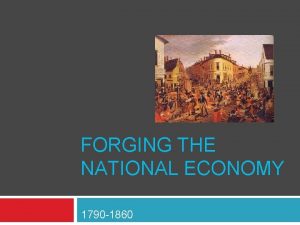Forging the National Economy 1790 1860 CHAPTER 14









































- Slides: 41

Forging the National Economy (1790 -1860) CHAPTER 14

A. The Westward Movement Westward moving population Alleghenies Ohio Valley Incredibly hard life Isolated Ill-informed Dangerous Superstitious

Mythical, lone-wolf figures Natty Bumpo Captain Ahab

B. Shaping the Western Landscape Clear-cut agriculture erosion, Over-cultivation Beaver trappers in Rocky Mountains

Buffalo hides Ecological imperialism

Natural resources George Caitlin

C. The March of Millions 1860 - US 4 th largest nation in the world Growth of American cities Urbanization Slums High birth rate & immigration Land of freedom & opportunity Faster transportation

Railroad carriages are pulled at the enormous speed of 15 miles per hour by engines which, in addition to endangering life and limb of passengers, roar and snort their way through the countryside, setting fire to the crops, scaring the livestock, and frightening women and children. The Almighty certainly never intended that people should travel at such breakneck speed. ” • -Martin Van Buren

D. The Emerald Isle Moves West Potato famine of 1840 s Boston & New York Hated by natives Did low class & dangerous jobs NINA -No Irish need apply

Slowly rose in prominence- Tammany Hall Political machines

E. The German 48 ers 1830 s-1860 s Crop failures Failed democratic revolutions Not as poor as Irish Midwest Against slavery Drinking on the Sabbath Temperance

F. Flare-ups of Antiforeignism Anti-foreign & anti-Catholics gained prominence (1850 - majority) Immigrants helped economy grow

American nativists “Order of the Star Spangled Banner” Know-Nothings American Party Fictional literature Attacks on Catholic schools, churches, & convents


G. Creeping Mechanization Slow to move to factory system Cheap land Cheap manufactured items from Britain British laws

H. Whitney Ends the Fiber Famine Eli Whitney & the Cotton Gin- 1793 Spread cotton production west Started American industrial revolution Revived slavery (manumission)



Samuel Slater- to Rhode Island- 1791 Textile mills started in the Northeast (water) 400 million lbs. annually

I. Marvels in Manufacturing Factories spread slowly until 1807 Embargo & non-intercourse Treaty of Ghent- 1815 Protective Tariff of 1816 Eli Whitney- Interchangeable Parts Early method of assembly line Gave north manufacturing advantage Rapid growth in patents- 1800 -1860

New inventions 1837 - John Deere- steel plow 1830 s- Cyrus Mc. Cormick- automatic reaper


“What hath God wrought…” Samuel Morse’s telegraph- 1844

J. Workers & “Wage Slaves” Owners vs. workers Factory conditions Labor unions forbidden Child labor Early demands of workers Higher wages, better conditions, shorter day, education for children Strikes by 1830 s & 40 s Strikebreakers

Win for the Unions MA supreme court- Commonwealth vs. Hunt- 1842 - unions legal

K. Women & the Economy Factory girls of New England (young, unmarried); 12 -14 hr days Lowell Factory System Women in teaching Women in domestic work


Most women didn’t work, those that did were mostly unmarried Fewer arranged marriages Lower birth rate (domestic feminism) Cult of domesticity

Increased educational opportunities – Mount Holyoke (Mary Lyon)

it is needful that certain relations be sustained, that involve the duties of subordination. There must be the magistrate and the subject, one of whom is the superior, and the other the inferior. There must be the relations of husband wife, parent and child, teacher and pupil, employer and employed, each involving the relative duties of subordination. The superior in certain particulars is to direct, and the inferior is to yield obedience. Society could never go forward, harmoniously, nor could any craft or profession be successfully pursued, unless these superior and subordinate relations be instituted and sustained. In this Country, it is established, both by opinion and by practice, that women have an equal interest in all social and civil concerns; and that no domestic, civil, or political, institution, is right, that sacrifices her interest to promote that of the other sex. But in order to secure her the more firmly in all these privileges, it is decided, that, in the domestic relation, she take a subordinate station, and that, in civil and political concerns, her interests be entrusted to the other sex, without her taking any part in voting, or in making and administering laws.

L. Western Farmers Reap a Revolution in the Fields Corn farming in western pioneer families Hogs & liquor Corn to the south

M. Highways & Steamboats PN Turnpike- 1790 s Prompted western migration Little federal funding National/Cumberland Road- 1811 -1852

Steamboats- Robert Fulton’s Clermont- 1807 2 -way transportation 1820 - 60 on the MS River 1860 - 1, 000 on MS Drew populations to river banks


N. Clinton’s Big Ditch in NY Erie Canal- 1817 -1825 Linked Great Lakes to Atlantic Not federally funded Cost, speed, population

O. The Iron Horse More versatile than canals Cheaper Easier to build Could go almost anywhere 1828 -1860 - 30, 000 miles of track Different gauges Poor brakes- Westinghouse Pullman sleeping car- 1859 Iron


P. Cables, Clippers, & Pony Riders 1819 - transatlantic steamer 1858 - transatlantic cable 1840 s & 1850 s- clipper ships 1860 - pony express 1861 - cable to CA

Q. The Transport Web Binds the Union Sections of nation tied together Depended on each other North made manufactured goods- sent south & west South grew cotton- sent north to mills West grew grains & livestock- food for other regions & Europe

R. The Market Revolution Turning into a nation of consumers Growth of corporations (limited liability) Boston Associates No longer self-sufficient households Social mobility or improving standard of living?

1. “A relatively insignificant experimental crop in the 1780 s, cotton provided nearly 40% of American exports by 1810. By the 1840 s, cotton represented over half the total value of exports. ” Account for this change. 2. In 1820 it cost $100 to ship a ton of grain to New York City from the Great Lakes. Just five year later, this transaction cost only $9. How can this change be accounted for. In what way did this change alter the traditional New England economy? 3. An English businessman wrote following the War of 1812 that it was “well worthwhile to incur a loss upon first exportations, in order, by glut, to stifle in the cradle the rising maufactures in the US which war has forced into existence. ” For what reasons were Americans still able to compete with English manufacturers during the 1820 s? 4. “Increasingly planters [were] separating large numbers of slaves from their families and selling them out of the Chesapeake into newly settled frontiers beyond South Carolina and Georgia. ” Explain why. 5. In 1798 the US faced with a growing crisis with France needed a more steady supply of firearms. Explain how Eli Whitney responded to this demand in a novel way. 6. Explain how either Alexander Hamilton or Thomas Jefferson would have responded to the beginnings of the market system.
 Chapter 14 forging the national economy
Chapter 14 forging the national economy 1790 foreign policy
1790 foreign policy Imperialism
Imperialism Pilgrimage to cythera
Pilgrimage to cythera Which statement best characterizes american farmers in 1790
Which statement best characterizes american farmers in 1790 W.w. norton
W.w. norton Athens and sparta were both
Athens and sparta were both Chapter 7 lesson 2 forging a new constitution
Chapter 7 lesson 2 forging a new constitution Border states in 1860
Border states in 1860 Aspirateur daniel hess
Aspirateur daniel hess American romanticism 1800 to 1860
American romanticism 1800 to 1860 Party platform definition
Party platform definition Arthur and lewis tappan apush
Arthur and lewis tappan apush Era of the democrats 1800-1860
Era of the democrats 1800-1860 Decreto 1860 de 1994
Decreto 1860 de 1994 American romanticism 1800 to 1860 worksheet answers
American romanticism 1800 to 1860 worksheet answers South carolina 1860
South carolina 1860 1860
1860 American romanticism 1800 to 1860 worksheet answers
American romanticism 1800 to 1860 worksheet answers American romanticism 1800 to 1860 worksheet answers
American romanticism 1800 to 1860 worksheet answers Map of 1860
Map of 1860 John breckinridge opinion on slavery
John breckinridge opinion on slavery Second great awakening
Second great awakening South africa 1860
South africa 1860 National differences in political economy
National differences in political economy Ministry of national economy oman
Ministry of national economy oman National differences in political economy
National differences in political economy Forging adalah
Forging adalah Types of forging
Types of forging Flashless forging adalah
Flashless forging adalah Wholesale sheet metal forming
Wholesale sheet metal forming Flashless forging process
Flashless forging process Forging process
Forging process Flashless forging process
Flashless forging process Flashless forging process
Flashless forging process Forging vs casting pros and cons
Forging vs casting pros and cons Flashless forging process
Flashless forging process Power generation forging
Power generation forging Forging a new deal section 1 answers
Forging a new deal section 1 answers Forging the new republic worksheet answers
Forging the new republic worksheet answers Upset forging die design factory
Upset forging die design factory Pengertian squeeze casting
Pengertian squeeze casting
